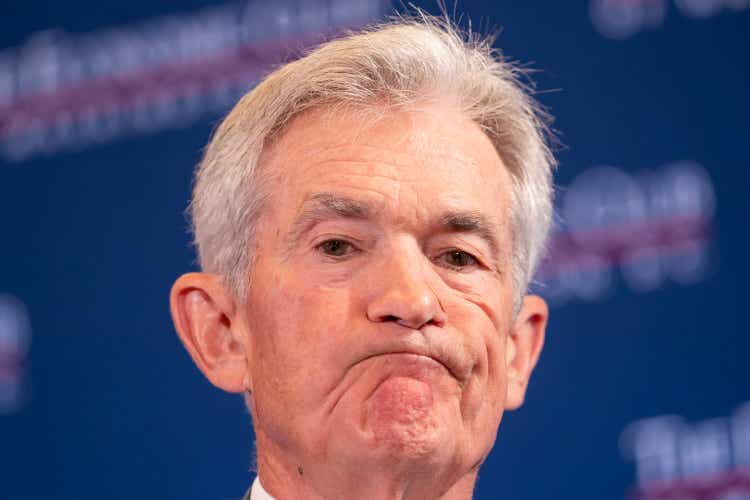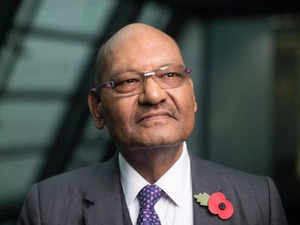
Nathan Howard The beginning of the easing cycle The Fed is set to start a monetary policy easing cycle on Wednesday at the September FOMC meeting. The CME Federal Funds futures are indicating a 50% probability that the first cut will be a jumbo 50bpt cut, with a 50% probability of a 25bpt cut. For the traders this is a 50-50 bet, like a flip of a coin.
The bet seems to be that the stock market could rise sharply with the 50bpt cut, but fall in disappointment with a 25bpt cut. CME But before digging into the analysis, let's establish chronology of the events leading to the first cut. Let's remember that the Fed has been under the immense political pressure to cut interest rates, even President Biden predicted a cut before the election.

However, the Fed Chair Powell remained hawkish and dismissed the rising unemployment rate at "statistical regularity" the July FOMC meeting, pointing out that the increase in the labor force is the main reason for the rise in the unemployment rate, and not the layoffs. A few days later, the July labor market report showed a further increase in the unemployment rate to 4.3% - and the market started to panic urging a 50bpt emergency cut, pointing out that the Fed errored at the July meeting for not cutting interest rates.
But note, the rise in the unemployment rate was due to the increase in the labor force, and not the layoffs. Powell turned dovish at the Jackson Hole speech, acknowledging that the Fed's focus has shifted from the inflation mandate to the labor market mandate - and essentially signaled the beginning of monetary policy easing cycle. The time has come for policy to adjust.
The direction of travel is clear, and the timing and pace of rate cuts will depend on incoming data , the evolving outlook, and the balance of risks. However, since the Jackson Hole speech, the labor market has slightly improved, and inflation has turned higher, based on the core CPI data for August. Still, the market expects the Fed to cut on Wednesday, and to continue cutting from 5.
33% to around 2.75% by December 2025, which represents an aggressive policy easing over the next year usually associated with a recession. The labor market situation So, let's look at the data, and start with the labor market.
In fact, this is exactly what the FOMC will do at the meeting before making the decision. The job creation, based on the non-farm payrolls, has been slowing since March 2024 (the blue line). At the same time, the pace of layoffs has been increasing, based on the 4-week average in weekly claims for unemployment (the red line).
However, the non-farm payrolls for August were higher than in July, while the weekly clams have been falling for 6 weeks, so the labor market is not deteriorating, and we are not in a recession-type environment yet where the Fed needs to cut aggressively. In addition, the weekly claims are still at a very low level historically, which suggests that the labor market is still tight. Still, the trend of weakening in the labor market is firmly in place, which suggests that the Fed is likely to proactively cut by 25bpt next week.
FRED The inflation situation The Fed Chair Powell revealed in Jackson Hole that the main worry for the Fed was the inflationary wage-price spiral - where higher wages lead to higher prices, which lead to even higher wages, and so on. However, it looks that this worry has eased, based on Powell's Jackson Hole speech . It seems unlikely that the labor market will be a source of elevated inflationary pressures anytime soon.
Thus, the Fed now feels confident that inflation will sustainably fall to the 2% target, and thus, can start easing the policy rate. In support, the monthly inflation has been cooling over the summer, pushing the quarterly annualized inflation to 2% already. However, the 3-month streak of the low monthly core CPI inflation readings at 0.
1-0.2% was broken in August with a 0.3% core CPI reading.
That's too high - it's equivalent to 3.6% annual inflation if it continues at this pace. In fact, the Fed's InflationNowcast is predicting a core CPI at 0.
27% (rounded to 0.3%) in September as well. So, this would not be a positive development for inflation.
core CPI MoM (Trading Economics) The main driver of inflation is Shelter, which rose by 0.5% MoM in August. The main driver of Shelter inflation is the housing shortage, which is exacerbated by high immigration.
Immigration is boosting the labor force, and thus it's easing the labor shortage - and that's good for inflation because it's keeping the wage growth in check. At the same time, immigration is exacerbating the housing shortage, and potentially pushing the shelter inflation higher. In order to lower Shelter inflation, the supply of housing needs to increase, which requires more construction workers, and thus more immigration.
This is the new vicious cycle likely to keep inflation elevated above the 2% target. The point is that the problem with inflation is now solved. Thus, the 0.
3% core CPI print for August is essentially ruling out the 50bpt cut at the September meeting, which concurs with the data from the labor market. Implications Looking back at the 50-50 coin toss bet - my prediction is that there is a 100% probability that the Fed will cut by 25bpt next week, and that's supported with the analysis of the recent labor market and inflation data. Thus, if the short-term bet is that a 25bpt cut will disappoint the market, and consequently that the S&P500 ( SP500 ) will sell off on the news, that's the bet that I would take.
However, short-term trading is risky, and anything could happen. The real question is what are the longer-term implications. The aggressive monetary policy easing expectations embedded in the bond market are generally associated with a recession - and that means that the stock market is facing a recessionary bear market.
That's my baseline scenario. On the other hand, the bond market could be pricing a policy normalization, where the Fed lowers the interest rates to the neutral level, and that could be positive for the stock market because it assumes a soft-landing (no recession). But what is the r* or the neutral rate? It could be much higher than 3%.
In fact, the current policy rate might not be restrictive at all. Even the Fed (Kansas City) thinks that the current policy rate is not sufficiently restrictive . The truth is nobody knows what happens next, partially because we don't know who will be the next President of the United States, and we don't know what the immigration policy will be, among many other key issues such as taxation and trade policy.
Either way, the current environment is inflationary, given the unfolding trend of accelerated de-globalization. There is an oil tanker on fire in Red Sea as I write this. Powell referenced the war in Ukraine as one of the reasons for high inflation in 2022 - and that war is still raging with no end in sight, and other wars are progressing.
New tariffs on China are being erected. The project of aging population replacement with immigration in the US and Europe could backfire in so many ways, first with higher shelter costs, and ultimately with domestic political instability. The stock market has very strong momentum and wants to go higher, and the risk is to the upside as long as the data does not clearly indicate a recession, at which point the bubble would burst.
But this is not the environment to chase the market, it's the environment to reduce the exposure to the stock market, especially for anybody getting close to retirement. The risk is still that the Fed's likely cut could be premature, and result in higher inflation, as we saw in August CPI numbers. But also, the risk is that we could already be slipping into a recession, based on higher consumer delinquency rates, and other indicators.
In addition, there is a bursting Gen AI bubble, as the Gen AI hype is fading. Further, the risks associated with the US election and the geopolitical escalations are only rising. This is all happening with the S&P500 ( SPY ) ( SPX ) trading at the PE ratio of 24.
Analyst’s Disclosure: I/we have a beneficial short position in the shares of SPX either through stock ownership, options, or other derivatives. I wrote this article myself, and it expresses my own opinions. I am not receiving compensation for it (other than from Seeking Alpha).
I have no business relationship with any company whose stock is mentioned in this article. Seeking Alpha's Disclosure: Past performance is no guarantee of future results. No recommendation or advice is being given as to whether any investment is suitable for a particular investor.
Any views or opinions expressed above may not reflect those of Seeking Alpha as a whole. Seeking Alpha is not a licensed securities dealer, broker or US investment adviser or investment bank. Our analysts are third party authors that include both professional investors and individual investors who may not be licensed or certified by any institute or regulatory body.
.














